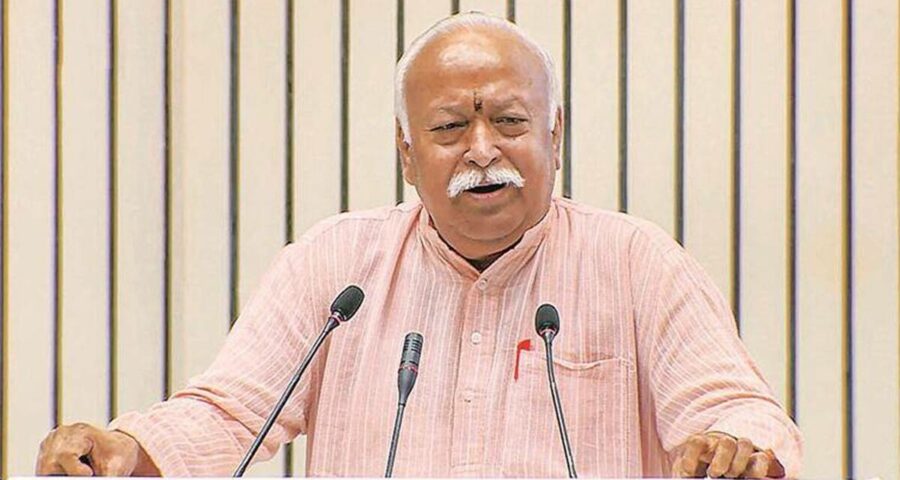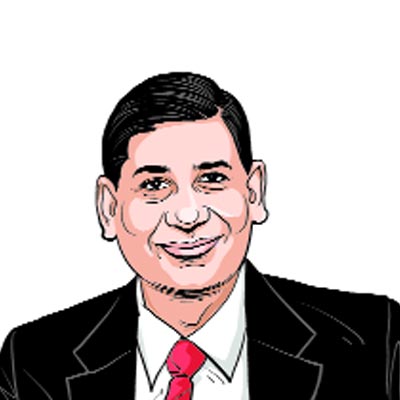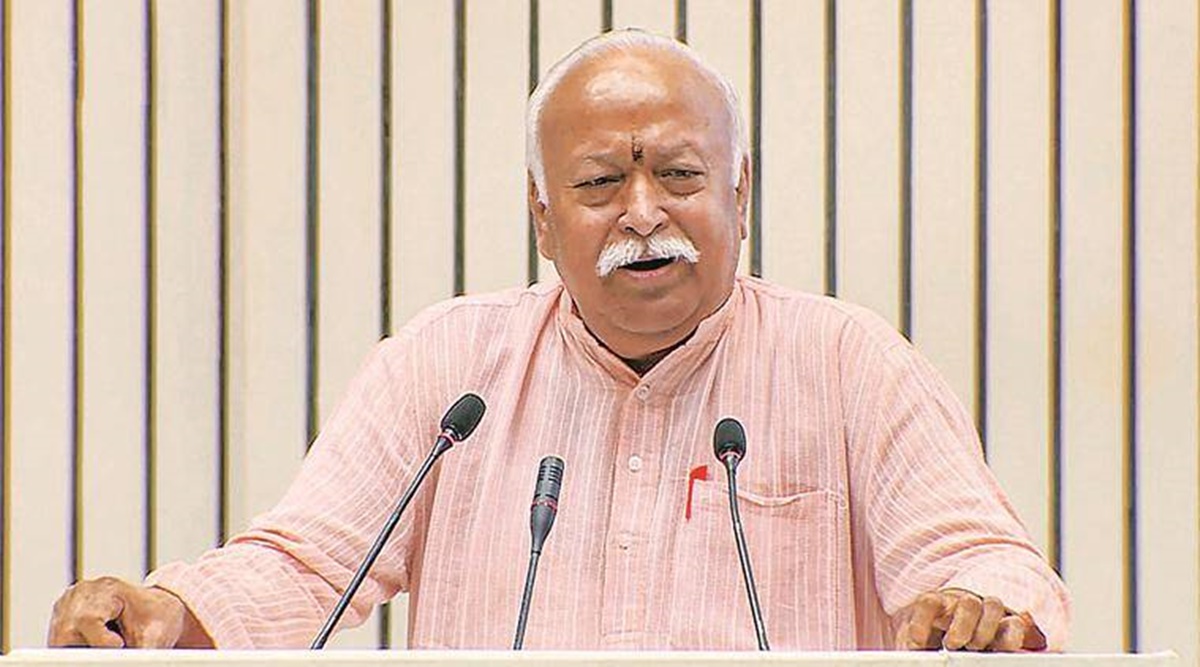Empirical evidence and historical experience make it clear that it is economic development, or lack of it, that determines population growth rates – not religious identity
Get email alerts for your favourite author. Sign up here
RSS chief Mohan Bhagwat is, perhaps, the most influential non-state actor in India today. Mukesh Ambani may have to settle for second place. Bhagwat is a glib talker and at times, his own hardcore Hindutva footsoldiers get confused by his statements in favour of Muslims. Some of his statements do indicate that he wants to slowly and gradually move away from the essential characteristics of Hindutva ideology, as enunciated by V D Savarkar and M S Golwalkar. To his credit, very quickly and seamlessly, he tries to retract his position by making a statement that shows that he is still firmly rooted in the original Hindutva project. As a result, liberals and secular intellectuals refuse to believe him or give much credence to his pro-Muslim statements. As a teacher, this author believes in engaging with the RSS chief. Accordingly, there is neither any hesitation in appreciating him nor subjecting his statements to critical scrutiny.
While releasing a book in Guwahati, the RSS chief tried to assure Muslims that the Citizenship Amendment Act (CAA) had nothing to do with their citizenship and is aimed at merely helping the persecuted minorities in Pakistan and Bangladesh, since the Nehru-Liaquat pact on the protection of minorities has not been honoured by our neighbours. Why Afghanistan has been included in the CAA, which was not a party to the aforesaid pact, has not been clarified by Bhagwat. Similarly, why the all-important expression — “religious persecution” — is missing from the CAA has not been explained by him.
Moreover, the real anxiety of Muslims was not about the CAA but the NRC, and the consequences of possible exclusion from it due to the absence of or discrepancy in documents. There are people in Assam with 11 or 15 documents, including land records from before Independence, who were excluded from the NRC.
But Bhagwat’s most controversial statement in Guwahati was about the decision of Muslims to increase their population from the 1930s. The RSS chief has not quoted any mass campaign launched by M A Jinnah or the Muslim League that urged Muslims to produce more children. There is no evidence of the Muslim clergy initiating any such movement, though some ulema had opposed permanent sterilisation methods.
Indeed, some facts may indeed be cited to substantiate the RSS chief’s statement. For example, while the Muslim population was 31.2 million, as recorded in the 1921 census, with a growth rate of 1.29 per cent, it went up to 35.8 million over time with a growth rate of 14.75 per cent. But then the devil is always in the detail. The Hindu growth rate was minus 0.68 in 1921 and it, too, registered a massive increase with a 10.54 per cent growth rate. The Spanish Flu of 1918 may have contributed to the low growth rates of both Hindus and Muslims in 1921.
In the 1941 census, the Hindu growth rate dropped to 6.19 per cent but the Muslim growth rate went up to 18.43 per cent. Bhagwat may have kept just these two census data in mind. But to get the complete picture, one needs more facts. In 1951, Hindus registered an impressive growth rate of 27.36 per cent but the Muslim growth rate went down to 16.5. Partition may have contributed to the rise and fall in growth rates.
In 1961, while the Hindu growth rate was 20.75, the Muslim growth rate drastically went up to 32.48. This increase was certainly not due to any concerted efforts of the community, its leadership or clergy. In fact, in the 1971 census, the Muslim growth rate went down from 32.48 to 30.78. Since then, it has been declining in every census. If we compare the growth rates of all communities in the 2001 and 2011 census, the sharpest and steepest decline was registered by the Muslim community — from 29.52 to 24.60. The Hindu growth rate declined only marginally from 19.92 to just 17.75.
The National Family Health Survey (2014), too, found that the Muslim fertility rate per woman had declined more than the Hindu fertility rate. The Muslim fertility rate in Kerala, Karnataka and Andhra Pradesh stood at 2.3, 2.2 and 1.8 respectively — much lower than the fertility rate of Hindu women in Bihar, Rajasthan and UP at 2.9, 2.8 and 2.6 respectively.
States and Union territories with a large Muslim population give a more clear idea about the myths perpetuated by the Hindu right-wing. Lakshadweep, Jammu and Kashmir, Assam, West Bengal and Kerala registered highly encouraging growth rates of 1.1, 1.3, 3.3, 1.8 and 1.9 respectively. Muslims have achieved the desirable replacement fertility rate (2.1) target in Tamil Nadu, Andhra Pradesh and Odisha and they are likely to reach that benchmark in the coming census in Kerala, West Bengal, Gujarat, Karnataka and Chhattisgarh.
Bhagwat must use his influence to tell the Lakshadweep administrator and the chief ministers of UP and Assam that there is no compelling state interest in bringing in a coercive two-child law anymore. At no point was the difference in Hindu and Muslim fertility more than 1.1 child(ren). Today, it is an insignificant 0.40.
The RSS chief must convince Hindutva footsoldiers that the fertility rate has nothing to do with religion and has everything to do with education and prosperity. The top three countries with the highest fertility rate in the world are Niger, Angola and the Democratic Republic of Congo. All three are poor and two of them have a massive Christian majority. Prosperous Muslim countries present an entirely different picture. Thus, the fertility rates in Saudi Arabia, Turkey and UAE in 2021 are 2.2, 2.07 and 1.38 respectively.
Even in Pakistan, the fertility rate has gone down from 6.6 in 1971 to 3.4 in 2020. Bangladesh’s fertility rate has gone down from 6.2 in 1981 to 2.3 in 2020. The fertility rate depends on income levels. Thus, low-income countries have high fertility rates of four, the rate of high-middle-income countries is 1.9 and high-income countries as low as 1.7.
In 1800, the global population was one billion and today it is 7.7 billion. The fastest doubling of world population happened between 1950 to 1987 — from 2.5 billion to five billion in just 37 years.
One was shocked to see the RSS chief in 2016 urging Hindus to increase their population; he asked them which law prevents them from having more children. Even BJP MP Sakshi Maharaj in 2015 urged Hindu women to produce four children. Another influential BJP MP, Surinder Singh, went a step ahead and directed poor Hindu women to produce five children. These statements completely undermine the agency of Hindu women.
Were there similar statements made after the 1930s by Jinnah or other prominent Muslim leaders and ulema is the moot question. If the Hindus of today do not pay much heed to these calls to produce more children, why would anyone think that Muslims post-1930s have obediently complied with similar such calls, if they were actually made?
Population control is indeed a desirable goal but the time to go the Chinese way has long since passed. Today, India is close to achieving the replacement rate of population and we need to value our demographic capital. The Modi government in 2020, in an affidavit on oath, has told the Supreme Court that “the international experience shows that any coercion to have a certain number of children is counter-productive and leads to demographic distortions”. From where, then, do the UP and Assam state governments get the courage to go against the current central government and the Vajpayee government’s national population policy of 2000?
(The writer is vice-chancellor NALSAR University of Law, Hyderabad. Views are personal)
Source: Read Full Article




